It looks like you're using an Ad Blocker.
Please white-list or disable AboveTopSecret.com in your ad-blocking tool.
Thank you.
Some features of ATS will be disabled while you continue to use an ad-blocker.
27
share:
Continuing the excellent series of threads on this topic (which you can find on ATS by searching for "strange moons"), let me introduce to you all:
Saturn's moon Atlas
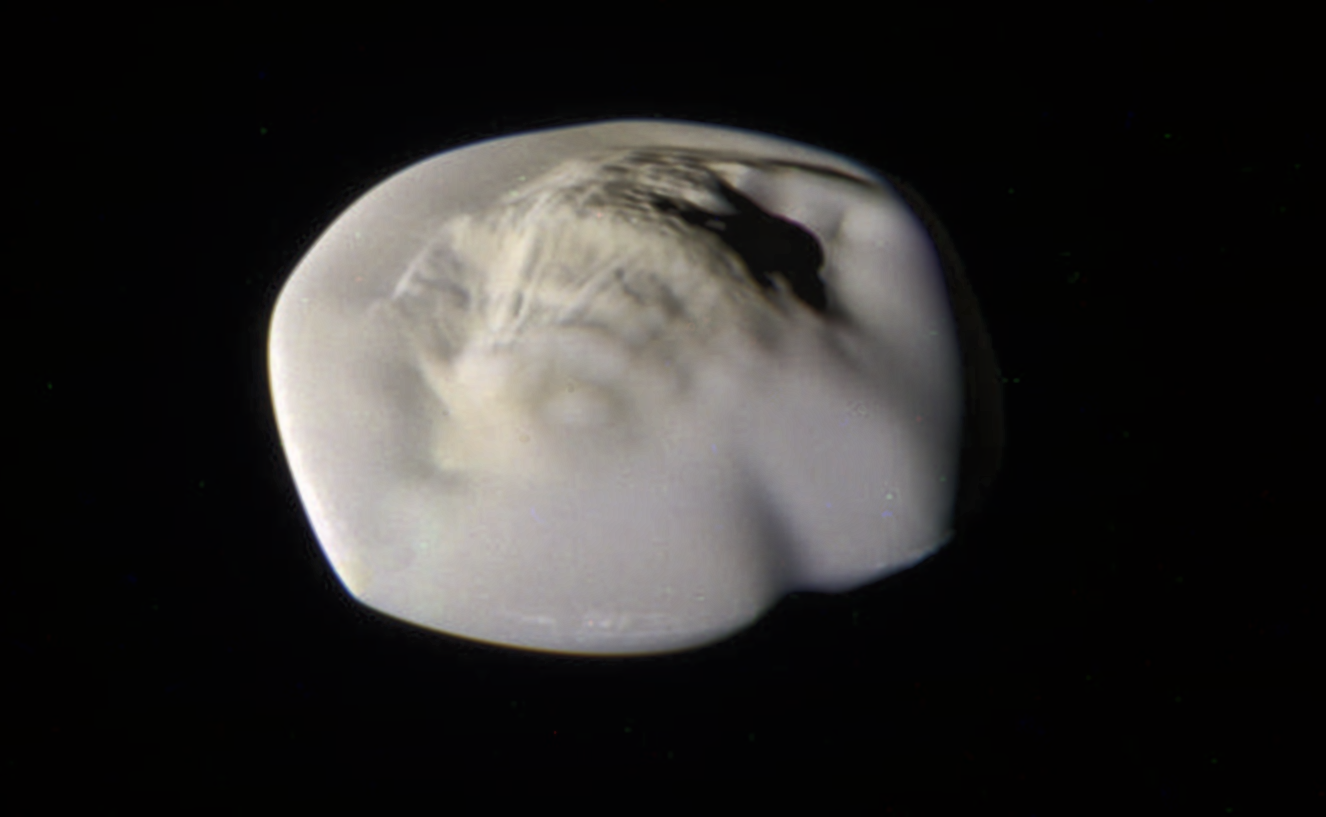
(Image processed by Ian Regan)
A raw, unprocessed image: saturnraw.jpl.nasa.gov...
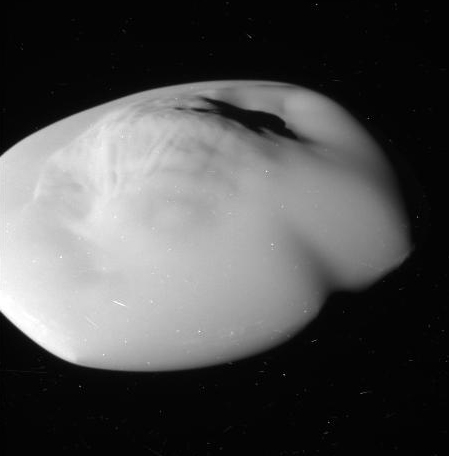
Atlas was discovered by Richard Terrile in 1980 (some time before November 12) from Voyager photos and was designated S/1980 S 28. In 1983 it was officially named after Atlas of Greek mythology, because it "holds the rings on its shoulders" like the Titan Atlas held the sky up above the Earth. It is also designated Saturn XV.
It's a tiny (just 19 miles wide) moon that has an impressive "skirt" of material piled up around its equator.
It looks very similar to another tiny moon of Saturn - Pan:
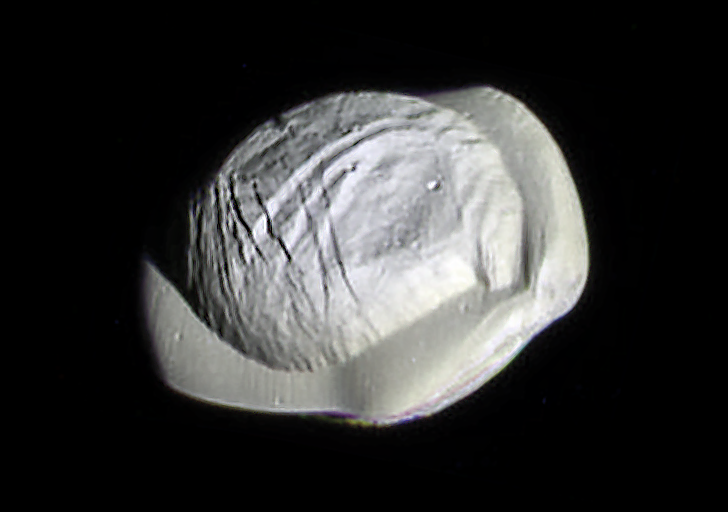
The closeup image of Atlas here has been taken by Cassini on April 12th, when the spacecraft came as close as about 7,000 miles (11,000km) from the moon:
Cassini Sees "Flying-Saucer" Moon Atlas Up Close
Animation of the fly-by images:
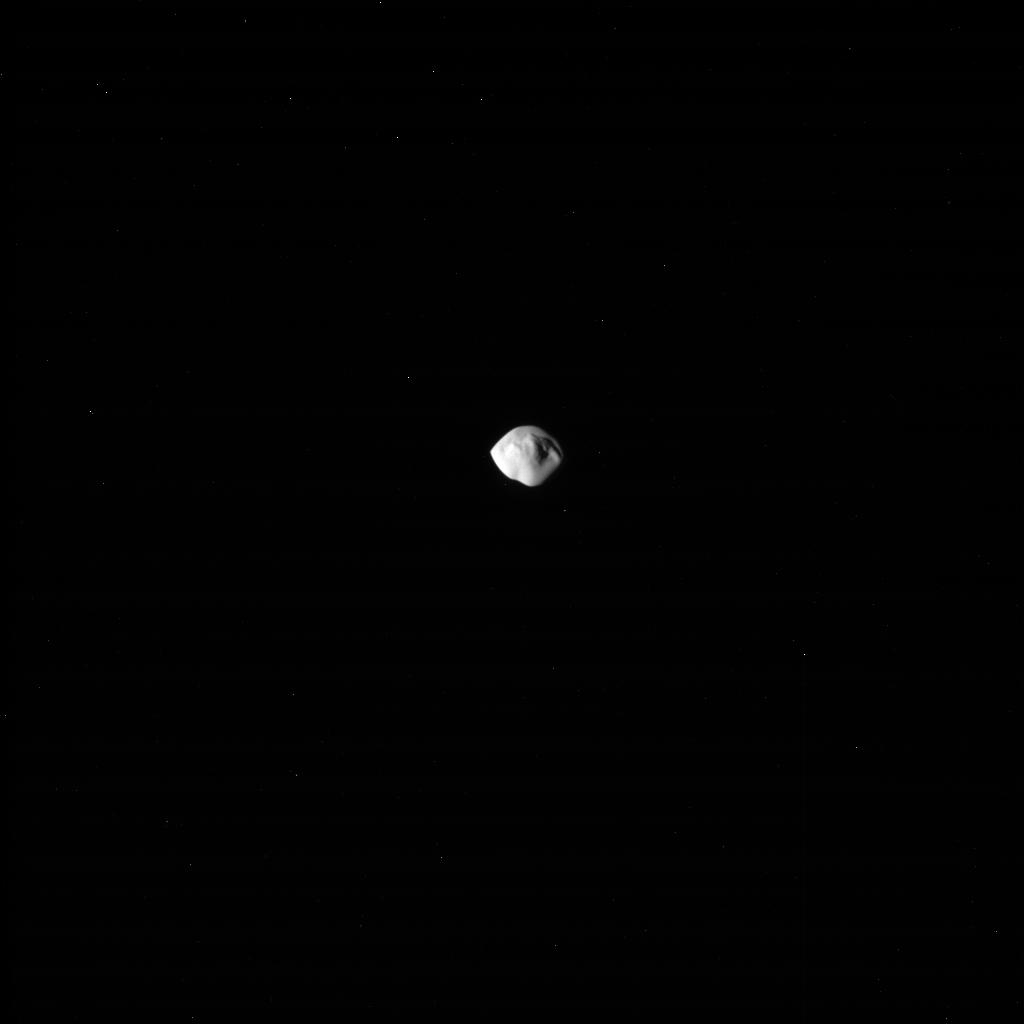
Prior to this, all we had was these shots from much much further away:
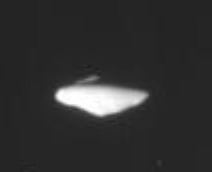

For the most striking feature of Atlas, that huge "skirt" of material around its equator, the most likely explanation is that it's icy material from Saturn's rings that has been swept up by this tiny moon. Even though the moon is tiny, Saturn's rings are very thin, ranging from 10 meters to 1 km in thickness.
Saturn's moon Atlas

(Image processed by Ian Regan)
A raw, unprocessed image: saturnraw.jpl.nasa.gov...

Atlas was discovered by Richard Terrile in 1980 (some time before November 12) from Voyager photos and was designated S/1980 S 28. In 1983 it was officially named after Atlas of Greek mythology, because it "holds the rings on its shoulders" like the Titan Atlas held the sky up above the Earth. It is also designated Saturn XV.
It's a tiny (just 19 miles wide) moon that has an impressive "skirt" of material piled up around its equator.
It looks very similar to another tiny moon of Saturn - Pan:

The closeup image of Atlas here has been taken by Cassini on April 12th, when the spacecraft came as close as about 7,000 miles (11,000km) from the moon:
Cassini Sees "Flying-Saucer" Moon Atlas Up Close
Animation of the fly-by images:

Prior to this, all we had was these shots from much much further away:


For the most striking feature of Atlas, that huge "skirt" of material around its equator, the most likely explanation is that it's icy material from Saturn's rings that has been swept up by this tiny moon. Even though the moon is tiny, Saturn's rings are very thin, ranging from 10 meters to 1 km in thickness.
edit on 14-4-2017 by wildespace because: (no reason given)
a reply to: wildespace
Oh dear. These images are hitting me in the heart today. They're so beautiful and represent some of the best qualities of humanity - the images, not the objects. International cooperation and centuries of accumulated and shared knowledge are embodied in the Cassini probe.
I'm looking at the unusual moons and imagining the expansive setting of the minuscule part of space. To all intents and purposes, infinity in all directions. Such silence too. Then we have the eternal motion of the moons and the gaze of Cassini's instruments.
All of which is transmitted down to this beautiful planet where we're currently, and constantly, behaving atrociously to each other. I'm going to go back to looking at the pictures.
Oh dear. These images are hitting me in the heart today. They're so beautiful and represent some of the best qualities of humanity - the images, not the objects. International cooperation and centuries of accumulated and shared knowledge are embodied in the Cassini probe.
I'm looking at the unusual moons and imagining the expansive setting of the minuscule part of space. To all intents and purposes, infinity in all directions. Such silence too. Then we have the eternal motion of the moons and the gaze of Cassini's instruments.
All of which is transmitted down to this beautiful planet where we're currently, and constantly, behaving atrociously to each other. I'm going to go back to looking at the pictures.
Now, Flat Earthers can come in here and claim Flat Atlas. Now that MF'er is flat!
Nice thread!
Nice thread!
a reply to: wildespace
It seems to have some resemblance in shape to the tiny moon Pan! With that walnut/ravioli/perogie bubble-shape in the middle. Very awesome.
www.abovetopsecret.com...
Interesting - fantastic photos.
It seems to have some resemblance in shape to the tiny moon Pan! With that walnut/ravioli/perogie bubble-shape in the middle. Very awesome.
www.abovetopsecret.com...
Interesting - fantastic photos.
It's the Jupiter 2!
Danger Will Robinson! Danger!
Got to be one of the most interesting moons we've seen yet. Ranks right up there with Aegir:
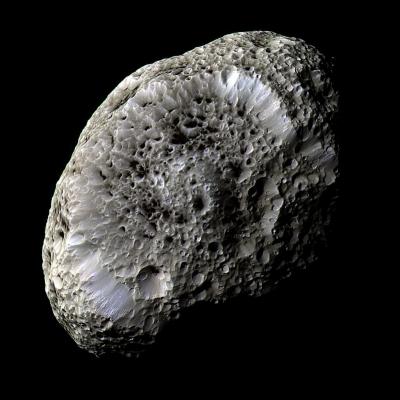
Danger Will Robinson! Danger!
Got to be one of the most interesting moons we've seen yet. Ranks right up there with Aegir:

originally posted by: TerminalVelocity
It's the Jupiter 2!
Danger Will Robinson! Danger!
Got to be one of the most interesting moons we've seen yet. Ranks right up there with Aegir:
It seems there's some disinformation going on on the Internet, because the moon in the picture you posted is Hyperion.
originally posted by: HawkeyeNation
Now, Flat Earthers can come in here and claim Flat Atlas. Now that MF'er is flat!
Nice thread!
They sure can. I thought the logic was that all heavenly bodies are spheres and that therefore the Earth is a sphere? At least I saw that used many times.
a reply to: ChipForBrains
There's a bit more to it than that.
I thought the logic was that all heavenly bodies are spheres and that therefore the Earth is a sphere?
There's a bit more to it than that.
very interesting post. cool pictures. what a peculiar shape pan is, like a hard moon-type object embedded through a softer one. similarly so, but
much smoothed down, with atlas.
originally posted by: Phage
a reply to: ChipForBrains
I thought the logic was that all heavenly bodies are spheres and that therefore the Earth is a sphere?
There's a bit more to it than that.
Yeah, it's really an oblate spheroid because it rolls of the tongue and Tyson made a point of it.
originally posted by: ChipForBrains
originally posted by: Phage
a reply to: ChipForBrains
I thought the logic was that all heavenly bodies are spheres and that therefore the Earth is a sphere?
There's a bit more to it than that.
Yeah, it's really an oblate spheroid because it rolls of the tongue and Tyson made a point of it.
The oblate spheroid thing has been around a lot longer than Tyson's recent popularisation of the phrase, as shown in this 1989 article by Isaac Asimov
chem.tufts.edu...
and it was originally discovered in 1959 by the Vanguard satellite:
archives.chicagotribune.com...
a reply to: OneBigMonkeyToo
Is what I was talking about. No need to state the obvious.
Tyson's recent popularisation of the phrase
Is what I was talking about. No need to state the obvious.
edit on 15-4-2017 by ChipForBrains because: (no reason given)
new topics
-
Are you ready for the return of Jesus Christ? Have you been cleansed by His blood?
Religion, Faith, And Theology: 17 minutes ago -
Chronological time line of open source information
History: 1 hours ago -
A man of the people
Diseases and Pandemics: 2 hours ago -
Ramblings on DNA, blood, and Spirit.
Philosophy and Metaphysics: 3 hours ago -
4 plans of US elites to defeat Russia
New World Order: 4 hours ago -
Thousands Of Young Ukrainian Men Trying To Flee The Country To Avoid Conscription And The War
Other Current Events: 8 hours ago -
12 jurors selected in Trump criminal trial
US Political Madness: 10 hours ago -
Iran launches Retalliation Strike 4.18.24
World War Three: 11 hours ago -
Israeli Missile Strikes in Iran, Explosions in Syria + Iraq
World War Three: 11 hours ago
top topics
-
George Knapp AMA on DI
Area 51 and other Facilities: 17 hours ago, 26 flags -
Israeli Missile Strikes in Iran, Explosions in Syria + Iraq
World War Three: 11 hours ago, 17 flags -
Thousands Of Young Ukrainian Men Trying To Flee The Country To Avoid Conscription And The War
Other Current Events: 8 hours ago, 6 flags -
Iran launches Retalliation Strike 4.18.24
World War Three: 11 hours ago, 6 flags -
Not Aliens but a Nazi Occult Inspired and then Science Rendered Design.
Aliens and UFOs: 17 hours ago, 5 flags -
12 jurors selected in Trump criminal trial
US Political Madness: 10 hours ago, 4 flags -
4 plans of US elites to defeat Russia
New World Order: 4 hours ago, 2 flags -
A man of the people
Diseases and Pandemics: 2 hours ago, 2 flags -
Chronological time line of open source information
History: 1 hours ago, 2 flags -
Ramblings on DNA, blood, and Spirit.
Philosophy and Metaphysics: 3 hours ago, 1 flags
active topics
-
The Tories may be wiped out after the Election - Serves them Right
Regional Politics • 24 • : crayzeed -
A man of the people
Diseases and Pandemics • 7 • : TheMichiganSwampBuck -
4 plans of US elites to defeat Russia
New World Order • 22 • : Greazel -
Israeli Missile Strikes in Iran, Explosions in Syria + Iraq
World War Three • 54 • : CarlLaFong -
Are you ready for the return of Jesus Christ? Have you been cleansed by His blood?
Religion, Faith, And Theology • 0 • : TheGoodNews -
12 jurors selected in Trump criminal trial
US Political Madness • 30 • : RazorV66 -
Thousands Of Young Ukrainian Men Trying To Flee The Country To Avoid Conscription And The War
Other Current Events • 5 • : JAY1980 -
Meet Catturd who has been swatted 3 times
General Conspiracies • 22 • : 7dayhome -
In the Beginning was the Word, and the Word was with God, and the Word was God
Religion, Faith, And Theology • 28 • : TheGoodNews -
Biden--My Uncle Was Eaten By Cannibals
US Political Madness • 48 • : CarlLaFong
27
